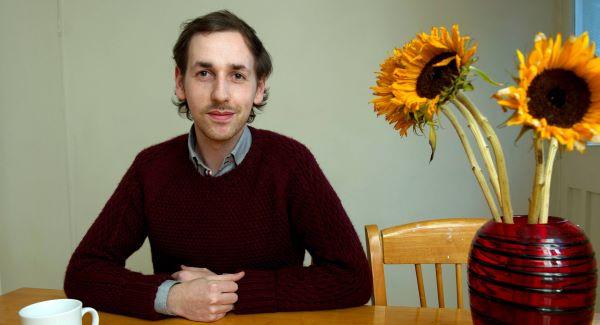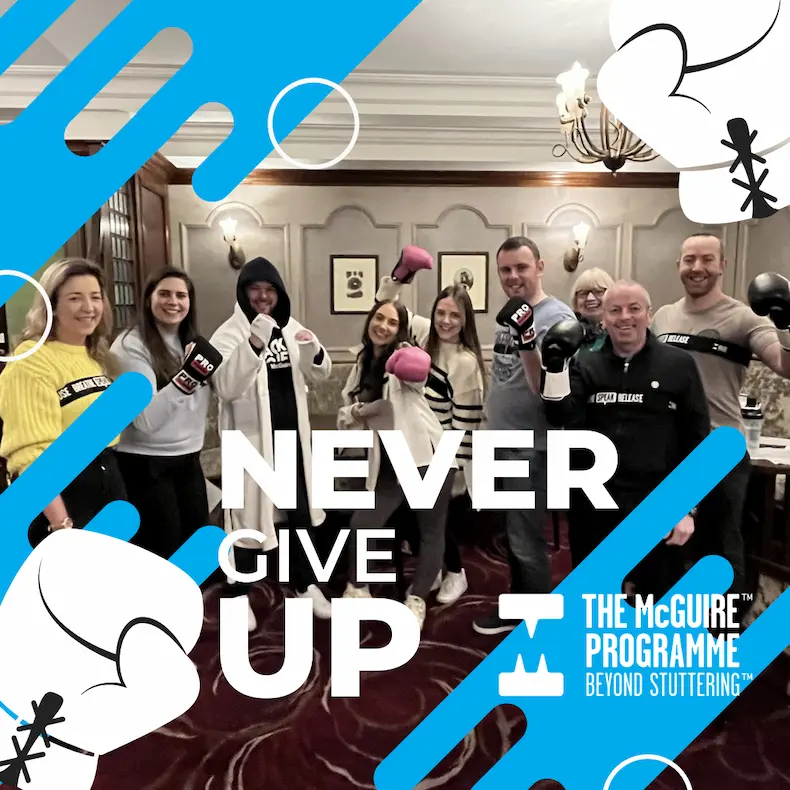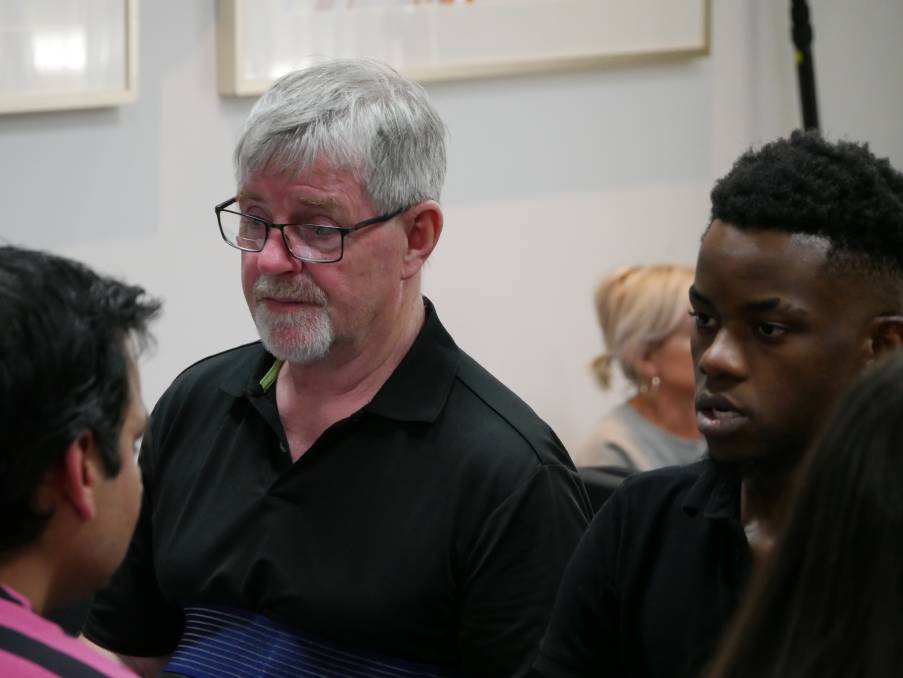When words fail you. Stammering iceberg.
Stammering iceberg: “Stammering is like an iceberg, in that only a small part of it, the blocks, the repetitions and facial tension and struggle, can be seen by the listener on the surface. Underneath is the anxiety and nervousness. Emotions and feelings are hidden and can affect the severity of a person’s stammer. It can have a massive impact on self-esteem and life choices. It can also affect people’s education or job opportunities,”
“The journalism is going really well. I’ve always know that’s what I’ve wanted to do,” says Hanlon, who completed a BA in journalism in Dublin City University.
But Hanlon is one of the 45,000 people in Ireland who stammer.
“My speech has always held me back through life. I wasn’t sure if I could cope [with journalism] because it’s a very communication-based, fast-paced career,” says Hanlon, who last year attended the McGuire Programme to alleviate stammering.
Three years ago, I would never have thought this [success] possible.
“Three years ago, I would never have thought this [success] possible. It has been a real big challenge, and took plenty of hard work to get here,” he says.
Stammering is a communication disorder that affects 1% of men and women in adulthood. It can be genetic and/or environmental, and is four times more common in males than females.
“Stammering is a condition that’s not well-known about. By the very nature of it, people who stammer find it hard to talk about it. The King’s Speech made people much more open to talking about it,” says Irish Stammering Association (ISA) development manager, Jonathon Linklater.
“Stammering is like an iceberg, in that only a small part of it, the blocks, the repetitions and facial tension and struggle, can be seen by the listener on the surface. Underneath is the anxiety and nervousness. Emotions and feelings are hidden and can affect the severity of a person’s stammer. It can have a massive impact on self-esteem and life choices. It can also affect people’s education or job opportunities,” he says.
There is no cure for stammering, but palliatives include speech therapy, counselling, drama groups, online forums, and dedicated programmes, including the McGuire Programme.
The McGuire Programme teaches students to breathe using the costal diaphragm. It retrains students how to speak, beginning with breathing, and moving onto sounds, words, sentences and speech. The intensive, three-day course (followed by support sessions and mentoring) focuses on self-esteem, confidence and acceptance. The success rate is 80%.
The whole point of the programme is to gain control and to be an eloquent speaker
“The whole point of the programme is to gain control and to be an eloquent speaker. The sessions were challenging and tough, and fun. I found it a really well-rounded way to really go at this stammering once and for all,” says Hanlon.
As a child, Hanlon attended speech, play and art therapies. These provided him with short-term solutions. “I would only have once-a-week individual speech-therapy sessions, and my speech would be very good. But the effects would only last for a few days. My other problem was the homework — I didn’t do it,” says Hanlon, whose stammer did not unduly affect him at the village primary school in Louth. Moving to a large secondary school in another town was more challenging. “From day one in secondary school, I began to get very self-conscious that I couldn’t speak the way others expected me to. I became more and more shy, and started drawing back from the crowd,” he says.
“A huge problem was I was so terrified of these blocks coming out, so I rarely spoke up in class. In class, if I had a question, it would go unanswered, because I wouldn’t put my hand up to ask the teacher. Holding back was so much easier and more comfortable than being loud and confident, and having all these blocks coming through.”
When Hanlon was 16, his mother saw pop star Gareth Gates, on The Late Late Show, advocating the McGuire Programme. “I thought I’d check out the McGuire programme, but I didn’t, because, at this stage, I was a teenager and very self-conscious. I was a very nervous and shy kind of guy. To have to attend a programme that drew attention to my flaws wasn’t for me,” he says.
Hanlon applied to Dublin City University to study journalism, hoping for a fresh start. “I felt slightly confident that college was going to be a big change. But that didn’t happen at all. It spiralled on from school, going from 2000 students to 20,000. It got worse and worse,” he says.
“Journalism requires a lot of different kinds of training, going out on the street speaking to people, presenting ideas and making phone calls. All of these things tested me every day speech-wise. It was a major struggle. I don’t know what drove me. I thought I have to do the thing I love,” says Hanlon.
“There wasn’t a second of the day that I didn’t think about speech. It was the first thing I thought about in the morning and the last thing at night. I wondered was I going to have to ask for a bus ticket or speak in class that day,” he says.
“I grew into this very awkward, shy, quiet person. Making friends was a slow process, but I felt accepted and normal, for the most part. When you meet new people, most people just assume you’re a shy person. I became accustomed to being known as a shy person and I relied on my friends to introduce me to new people,” he says.
Hanlon’s speech worsened during his final year in college. His tipping point was when he stood up in front of his class to make his final presentation, and couldn’t introduce himself or state the title of his topic.
“It was a very simple topic, and I couldn’t string a sentence together. I felt fear, shame and guilt for not being able to say a sentence. That really broke me down. That night was my lowest point and I contacted the McGuire Programme, and, by sheer luck, managed to get the last place on it,” he says.
Hanlon completed a three-day intensive course, as well as accessing the full-time mentor system and support network. He daily practices the techniques learned, and says that he worked extremely hard after completing the programme to retain his new skills.
Regional director of the McGuire Programme in Ireland, Joe O’Donnell, cautions against the idea of a quick-fix remedy to stammering.
“The course is only suitable for students willing to work hard and use the back-up support network. Stammering is something that’s so ingrained for many years, you have to work hard at it,” says O’Donnell.
The course is only suitable for students willing to work hard and use the back-up support network
Hanlon encourages young people who stammer to connect with others: “Don’t suffer in silence, don’t be quiet and don’t retreat into yourself. There’s no way you’re going to get through this if you don’t allow the people around you to help you.”
“I would advise people to look at what’s out there. Different things work for different people. There isn’t one therapy for everybody or one approach for everybody,” says Linklater. “You can’t get rid of a stammer, but you can change how you feel about it. Acceptance doesn’t mean that you’re throwing in the towel. It’s accepting that things can change and that your stutter doesn’t have to define you,” he says.
Irish Stammering Association, www.stuttering.ie the McGuire Programme costs €1,200 for a lifetime membership. The course fee includes a support network and mentoring for life, as well as free participation in any subsequent course.
Course participants pay the course fee after 1½ days of attendance. If a participant does not want to continue after 1½ days, there is no charge. The programme accepts participants ages 14+. The next McGuire Course takes place in Galway, Nov 7-10.
© Irish Examiner Ltd. All rights reserved







